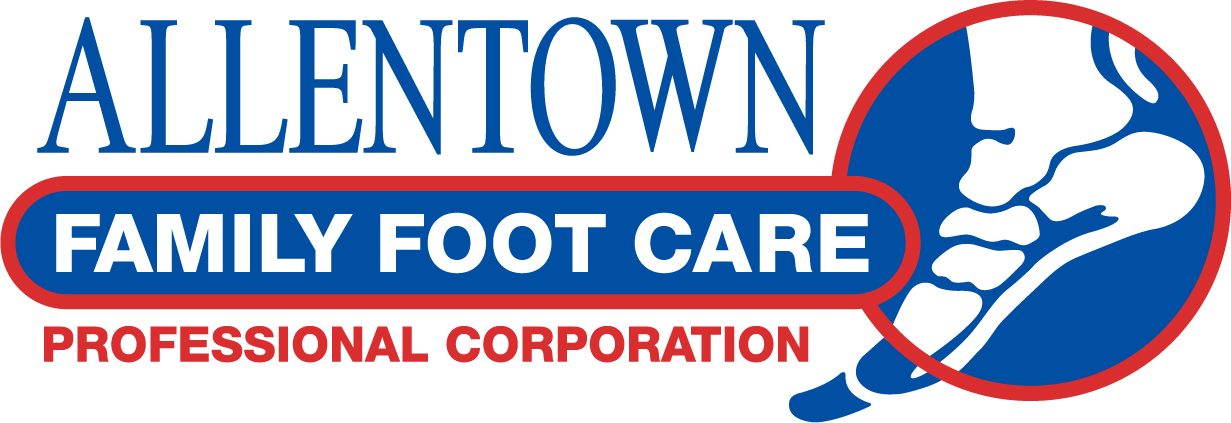Contributing author, Amee Siegel on behalf of Allentown Family Foot Care
Cancer is a small word that no family or loved one wants to hear. The word comes loaded with questions: What type of treatment is needed? What side effects am I to expect? What can I expect after I beat it? It is common knowledge that hair loss is often seen with cancer treatments, but what else could happen? Sure the nausea and vomiting that Chemotherapy can induce is no walk in the park, but there are other potential side effects as well. Common, but rarely known side effects, are fingernail and toenail changes.
There can be a number of changes to the nails due to chemotherapy treatment such as discoloration, horizontal ridges in the nails, onychomadesis, and onycholysis (1). Onychomadesis is the loss of an entire fingernail or toenail. This can result secondarily from bleeding under the nail, which separates the nail from the underlying skin. This term is often associated with a systemic illness. Onycholysis, or the slow loosening of a nail, can be due to any number of things such as trauma or fungus (1). There are cases where such lifting of the nails can create opportunities for microorganisms to find their way under the nails and overgrow, which can lead to a fungal or bacterial infection. Bacterial infections can be detrimental, especially with immunocompromised individuals such as cancer patients.
The chemotherapy drugs that cause onycholysis most often are called Taxanes and Anthracyclines The Taxanes are medications that stop cell division, thus stopping or slowing the progression of cancerous tumors. Dr. Mario E. Lacouture, of Memorial Sloan-Kettering Cancer Center in New York, states in an interview they are most often used for breast, lung, head and neck, and prostate cancers. The Taxanes have nail effects for about 80% of patients taking that treatment (2). To reduce acute toxicity, or the poisonous effects of the drug, Taxanes are used in smaller weekly doses. However, this smaller dose also alters the side effects of the medication.
How do chemotherapy medications such as Taxanes and Anthracyclines cause such effects on the fingernails and toenails? The chemotherapy medicines are given intravenously, therefore these drugs are in the blood stream, and one way of limiting the access of the drug to the nails is through cryotherapy or ice application (3). This ice application has proven to be effective in patients who have tried this method. When ice is applied to a part of the body, the blood vessels respond by shrinking or narrowing. This in turn limits the blood flow to that area of the body, therefore effectively limiting the chemotherapy medication to that area, and thus limiting their effects on the nails (3). It is recommended that the ice application is only necessary while being administered the chemotherapy drug.
If a fungal infection occurs because of the deformity of the nails after chemotherapy, there are options for treatment. Formula 3 is one topical antifungal solution to use on the nails daily, which has proven effective with little to no side effects. A topical treatment would be most desirable for post chemotherapy patients. There is also the option of an oral Lamisil pill to rid the nails of fungus, but like any other oral medication, it can have side effects. Consult your physician or podiatrist before considering any oral medications.
Cancer is never an easy hurdle to overcome, but knowing more about what to expect during and after chemotherapy can help to prepare a person for this journey. Not many patients are informed of the nail changes, and this can come as a surprise when it happens to them. The important aspect of the nail changes due to chemotherapy is that it is reversible. The nails will continue to grow, and when the chemotherapy medications are no longer causing the discoloration or looseness of the nails, they will grow back healthy and strong.
To address any questions, concerns and to discuss treatment options consult your podiatric physician. Contact Allentown Family Foot Care at 610-434-7000 to make an appointment.
Works Cited
1) A. M. Minisini, A. Tosti, A. F. Sobrero, M. Mansutti, B. M. Piraccini, C. Sacco and F. Puglisi (2002). Taxane-induced nail changes: incidence, clinical presentation and outcome. Annals of Oncology, 14(2), 333-337. Retrieved from http://annonc.oxfordjournals.org/content/14/2/333.full.
2) Skin Conditions Can Have Severe Impact in Cancer Patients (2011). Retrieved from http://csn.cancer.org/node/212297.
3) Peter Gilbar, Alice Hain, and Veta-Marie Peereboom (September 2009). Nail Toxicity Induced by Cancer Chemotherapy. J Oncol Pharm Pract, 15(3). 143-155. Retrieved from http://opp.sagepub.com/content/15/3/143.short.
